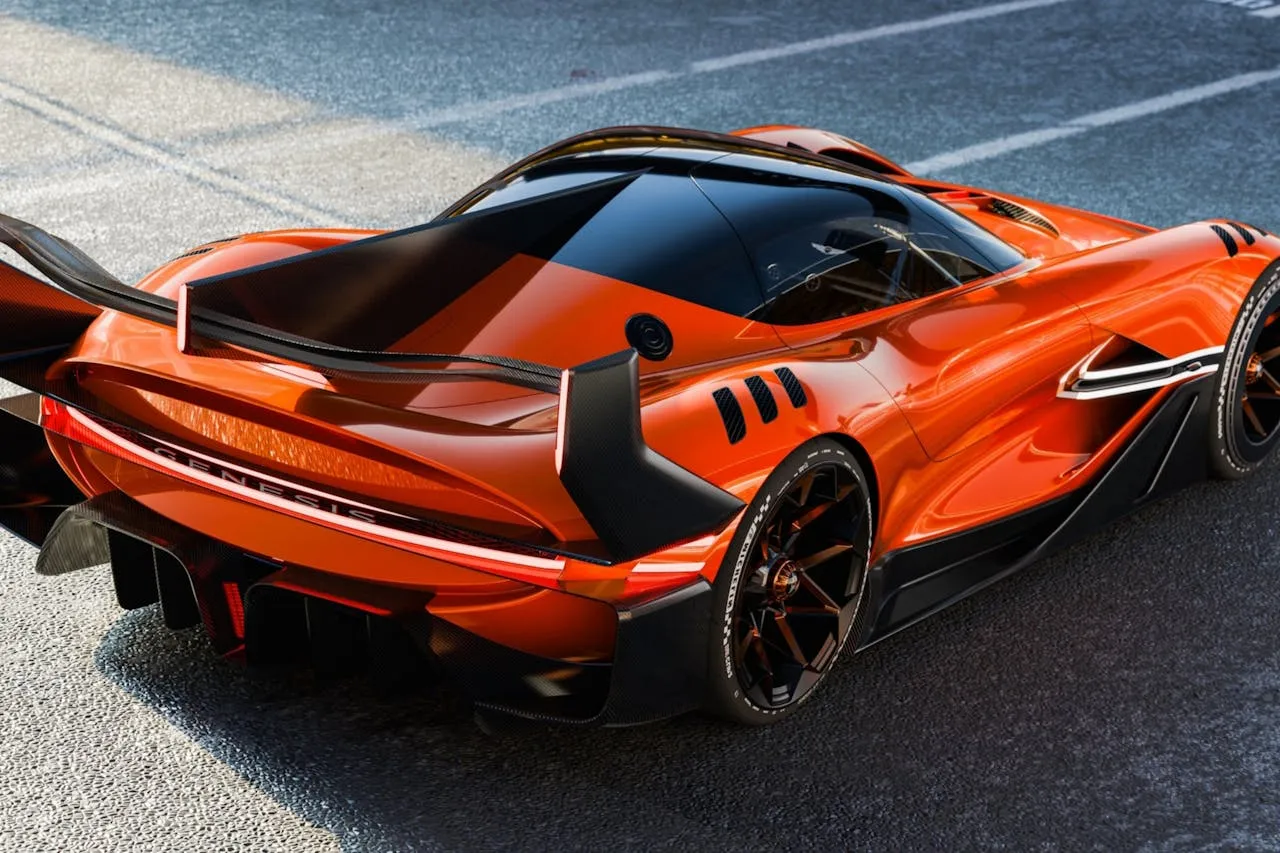
Pioneering Power: GM’s 1969 XP 512E Concept and the Electric Vision Half a Century in the Making
In the first quarter of this year, General Motors achieved a major milestone: the automaker nearly doubled its electric vehicle (EV) sales compared to the same period last year. This surge catapulted GM into the #2 spot among EV sellers in the United States—a significant leap forward in its electric journey. But despite the rapid rise in recent years, GM’s path to becoming a major player in the electric vehicle space hasn’t been a sudden pivot. It’s a story decades in the making, rooted in quiet experimentation and obscure concept cars that pushed boundaries long before the technology was ready for primetime.
One of GM’s most memorable EV efforts came in 1996 with the launch of the EV1, the first mass-produced electric car from a major automaker. Sleek, aerodynamic, and advanced for its time, the EV1 was both revolutionary and controversial, especially after GM discontinued the program and famously recalled and destroyed most of the cars. A decade later, GM returned to the EV landscape with a new approach—the Chevrolet Volt. Introduced in 2010, the Volt was the first commercially available plug-in hybrid in the United States, blending electric propulsion with a gasoline engine that served as a range extender. It helped shape public perception of hybrid-electric cars and offered a bridge to the future.
Yet, even before the EV1 or the Volt, GM had been quietly tinkering with electric mobility. One of its earliest and most overlooked creations was a tiny experimental concept vehicle unveiled in 1969: the XP 512E. Though it never made it to production, the XP 512E serves as a reminder that GM has long seen the potential in electric propulsion—even when few others were looking.
A Quirky Vision for Urban Mobility
The XP 512E—short for “Experimental Prototype 512 Electric”—made its public debut in May 1969 as part of GM’s “Progress of Power” exhibition, an internal showcase of futuristic and alternative powertrain technologies. Hosted at the automaker’s Warren Technical Center in Michigan, the event featured innovative vehicles meant to spark conversations about the future of energy and mobility. Among these was the 512E, a pint-sized electric runabout designed specifically for city driving.

Visually, the 512E looked more like something out of a sci-fi comic strip than a traditional GM vehicle. Its body, constructed from lightweight fiberglass mounted on a steel floor pan, measured just 86.3 inches long and 56 inches wide, with a wheelbase of only 52 inches. Tipping the scales at a modest 1,250 pounds, the 512E was truly compact—closer in scale to a golf cart than a modern city car.
Powering the 512E was an 84-volt lead-acid battery pack linked to a direct current (DC) electric motor mounted on the rear axle. This setup enabled the car to reach a top speed of 30 miles per hour, and it could travel up to 58 miles on a charge at a cruising speed of 25 mph. Not exactly a speed demon—the car’s 0–30 mph acceleration time clocked in at a sluggish 12 seconds—but it wasn’t intended to compete with muscle cars. It was designed to demonstrate the feasibility of urban electric transport at a time when such ideas were little more than futuristic fantasy.
Charging Ahead of Its Time
Of course, electric vehicle infrastructure in 1969 was nonexistent. Level 2 chargers were decades away, and public charging stations were unheard of. The XP 512E was engineered to recharge using a standard 115-volt household outlet. A full charge took approximately seven hours, aligning well with overnight home charging—a feature still relevant in today’s EV market. In addition to powering the main drive motor, the system included a 12-volt auxiliary battery for operating the car’s accessories, which included essentials like headlights, turn signals, windshield wipers, a heater-defroster, and even a horn.
Interestingly, the 512E’s design emphasized driver and passenger comfort, despite its tiny footprint. A side-pivoted canopy top and a lower front entry door allowed for relatively easy access to the interior. Once inside, occupants found a simple but surprisingly familiar setup: a bench seat, a conventional steering wheel, and standard controls for throttle and braking. GM even included an ashtray, a sign of the times.
For sunny days, drivers could raise the canopy to enjoy a semi-open-air driving experience. GM’s press materials described the effect as giving the car a “unique convertible appearance.” The canopy was also removable, enabling users to transform the vehicle into an ultra-compact electric roadster—one that wouldn’t have looked out of place in a Jetsons-style animated cityscape.
A Trio of Future-Thinking Concepts
The XP 512E wasn’t the only futuristic concept GM revealed during the Progress of Power exhibition. It was actually part of a three-model experimental “city car” series, all based on the XP 512 platform but powered by different propulsion systems.
Alongside the electric version was a gasoline-powered XP 512 model, featuring a fuel-efficient 12-horsepower, two-cylinder engine designed for minimal emissions and maximum fuel economy. And perhaps most intriguing of all was the hybrid-electric version—a vehicle that could operate in all-electric mode for short trips or switch to hybrid mode for longer journeys. The hybrid XP 512 could travel up to 150 miles on a single tank of gas and a fully charged battery, consuming just three gallons of fuel in the process. It was a remarkably forward-thinking prototype, essentially foreshadowing the architecture that would power plug-in hybrids decades later.
Though the XP 512E was never intended for mass production, and likely never saw public road use beyond testing and exhibitions, it remains a fascinating chapter in GM’s long and sometimes tumultuous history with electric vehicles. Its technical limitations were obvious—heavy lead-acid batteries, low speed, limited range—but those challenges were typical of the era. What stands out is the fact that GM was willing to invest in developing and showcasing electric mobility solutions at all, years before environmental concerns and fuel efficiency entered the mainstream.
In today’s era of lithium-ion batteries, high-speed charging, and advanced driver assistance systems, it’s easy to dismiss the XP 512E as a relic of a more primitive time. But it also served as a vital proof of concept. The experiment showed GM and the world what was possible—even if the world wasn’t quite ready to embrace it yet.
More than 50 years later, the seeds planted by efforts like the XP 512E are finally bearing fruit. GM’s latest electric lineup, which includes the Chevrolet Blazer EV, Equinox EV, and the Cadillac LYRIQ, builds on decades of internal research and development. And as the company moves toward its goal of becoming an all-electric automaker by 2035, the XP 512E stands as a quirky but meaningful reminder of how far electric vehicle innovation has come—and how long GM has been part of that journey.




